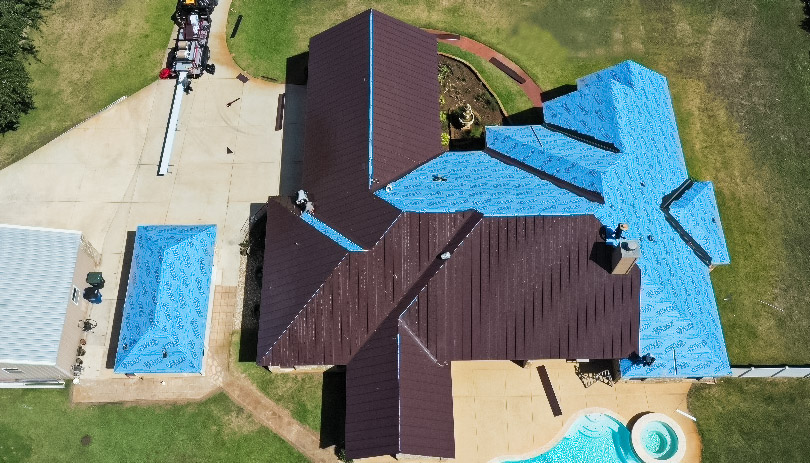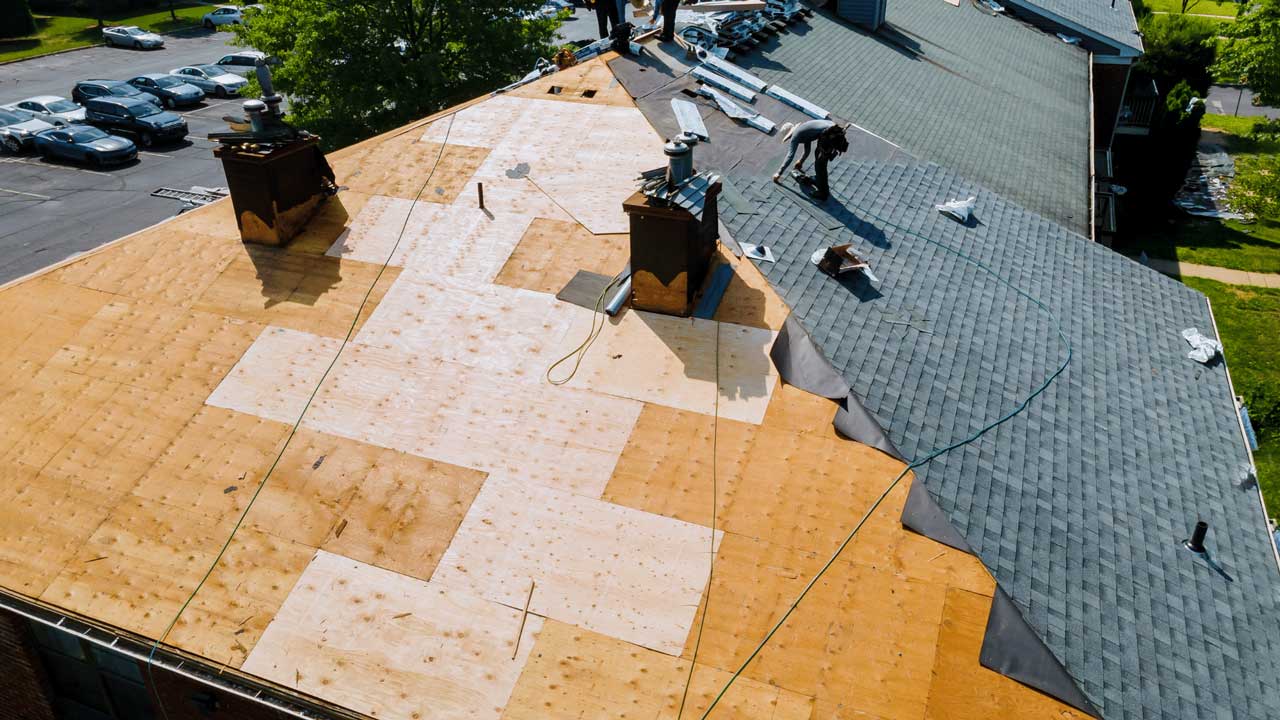Replacing an old asphalt shingle roof is a big job and comes with many potential pitfalls. To ensure the best outcome for any project, it pays to be aware of common mistakes that should be avoided in order to get the most out of your new roofing system.
This article will provide an overview of some key considerations when replacing an old asphalt shingle roof, including the importance of proper planning, understanding local codes and regulations, weighing cost versus quality, and more. Taking these steps into account can help you avoid costly errors and maximize the value from your investment.
Proper Planning
When replacing an old asphalt shingle roof, proper planning is essential in order to avoid common mistakes.
Before any work begins, homeowners should assess their needs and determine the type of material that will be used for the new roof along with the size and slope of their home.
Additionally, it is important to consider budget constraints and decide if other aspects of the project such as ventilation or insulation are also needed.
Hiring a reputable contractor is another critical step when replacing an old asphalt shingle roof.
It can be beneficial to seek out multiple bids from different contractors before making a decision so that you can compare prices and services offered.
When reviewing quotes, make sure they include all materials being used, labor costs, timeline for completion, payment terms and warranty information.
To ensure quality workmanship, ask potential contractors for references and check reviews online prior to hiring them.
Understanding Local Codes And Regulations

When replacing an old asphalt shingle roof, it is vital to understand local codes and regulations that apply.
Before taking any further steps, homeowners must ensure they are familiar with relevant legal requirements in their area. This includes applying for necessary permits and hiring contractors who are qualified to work on roofs in the locality.
The importance of staying compliant cannot be overstated; failure to adhere to local laws can result in costly fines or other penalties.
On top of this, having a valid permit proves that all safety protocols were followed when installing the new roof and provides owners with peace of mind about its structural integrity.
Furthermore, contractors should have up-to-date licenses from the correct authorities so that homeowners know the job will be done correctly according to approved standards.
By following these guidelines and ensuring compliance with local laws, homeowners can benefit from a safe and durable roof replacement without running into problems later down the line.
Weighing Cost Versus Quality
When replacing an old asphalt shingle roof, it is important to consider both cost and quality. Evaluating bids from contractors and choosing the most qualified installer should be central components of this decision-making process.
It can be tempting to simply choose the lowest bid; however, a low price may come with hidden costs down the road if materials or installation are subpar. Taking time to thoroughly evaluate bids against each other will help ensure that you get the best value for your money.
On the flip side, it is also important not to overspend on services or materials that aren’t necessary. Make sure all potential installers understand what work needs to be done on your roof before they submit their quotes so everyone is bidding on comparable projects.
If one contractor offers a significantly higher quote than others, ask them why they priced their job differently in order to determine whether additional expenses are justified by improved results elsewhere. By properly evaluating bids and choosing an experienced installer who has proven expertise in working with asphalt shingles, you can maximize both cost efficiency and long-term performance of your new roof.
Selecting The Right Materials
When replacing an old asphalt shingle roof, it is essential to select the right materials. Besides choosing colors and styles that match the aesthetics of a home, one should also ensure proper ventilation when installing new roofing.
This can be done by adding attic insulation or using other products that guarantee adequate air flow from outside into the living space beneath the roof. Additionally, particular attention needs to be paid to flashing around vents and chimneys; these areas are common sources for leaks if not installed correctly.
The correct installation of all components is important in order to extend the life span of a roof and prevent costly repairs down the road. When selecting materials, homeowners should thus consider factors such as durability, energy efficiency, wind resistance and fire rating.
Finally, taking time to research local codes and regulations related to building permits will help make sure any renovation project complies with government standards.
Installing The Underlayment
When installing an asphalt shingle roof, it is important to ensure that the underlayment is installed correctly.
The most common method for attaching the underlayment is with 1-1/2 inch nails or staples at 6 inches apart along eaves and rakes as well as 12 inches apart in between.
It is also important to not overlap more than two layers of felt when installing the underlayment, which would cause a potential leak point.
Additionally, there should be enough ventilation within the attic space beneath the roofing material to help reduce heat build up and moisture accumulation from condensation.
This can be achieved by ensuring all soffit vents are open and unobstructed and adding additional venting such as static vents around the entire perimeter of the roof deck area.
Taking these measures will ensure proper installation of underlayment while providing adequate protection against water infiltration, excessive heat buildup, and moisture accumulation due to condensation.
Paying Attention To Flashing
Replacing an old asphalt shingle roof properly requires paying attention to flashing. Flashing is the metal or plastic strips installed around chimneys, skylights, and other protrusions on a roof. It helps protect the installation from water damage by providing a barrier between seams in the roofing material.
Before installing new flashings, it is important to measure them accurately and inspect them for any signs of wear or tear. If necessary, they should be replaced with new materials that are compatible with the existing ones.
It also helps to check if there are any areas where two different kinds of flashings meet up; these intersections can leak and cause serious water damage if not sealed correctly. To do this, start at one end of the overlap and use caulk gun to apply sealant along each side of the joint until you reach the other end. This will ensure that no moisture can get through and into your home’s interior walls and ceilings.
By following these steps carefully when replacing an old asphalt shingle roof, homeowners can ensure their roofs remain durable and long-lasting for years to come.
Cleaning Up After Installation
After the old asphalt shingle roof has been replaced, it is important to take care of the cleanup process properly.
This includes disposing of all materials in an appropriate manner and ensuring there is adequate ventilation on the roof that meets any applicable building codes.
When disposing of material after a roof replacement, it should be done according to local regulations.
In some cases, this may mean taking debris such as nails or broken pieces of shingles to a landfill rather than leaving them behind for someone else to deal with.
Additionally, proper maintenance procedures must also be followed when working around vents or other openings in order to ensure they are safe and secure before calling the job complete.
Lastly, good ventilation helps prevent moisture buildup on the new roof which can cause mold growth and damage due to trapped heat inside attics or crawl spaces.
Adequate ventilation will help maintain a healthy environment and extend the life of your newly installed asphalt shingle roof.
Conclusion
When replacing an old asphalt shingle roof, proper planning is essential.
It is important to understand local codes and regulations as well as weigh cost versus quality when selecting materials for the job.
Additionally, underlayment should be installed properly and flashing must be paid careful attention to during installation.
Once the job is complete it is necessary to clean up any debris left behind from the project.

